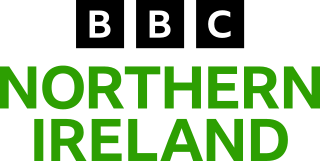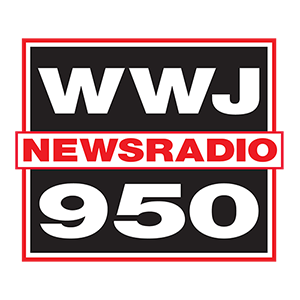Related Research Articles

Medium wave (MW) is the part of the medium frequency (MF) radio band used mainly for AM radio broadcasting. The spectrum provides about 120 channels with more limited sound quality than FM stations on the FM broadcast band. During the daytime, reception is usually limited to more local stations, though this is dependent on the signal conditions and quality of radio receiver used. Improved signal propagation at night allows the reception of much longer distance signals. This can cause increased interference because on most channels multiple transmitters operate simultaneously worldwide. In addition, amplitude modulation (AM) is often more prone to interference by various electronic devices, especially power supplies and computers. Strong transmitters cover larger areas than on the FM broadcast band but require more energy and longer antennas. Digital modes are possible but have not reached momentum yet.

In radio, longwave, long wave or long-wave, and commonly abbreviated LW, refers to parts of the radio spectrum with wavelengths longer than what was originally called the medium-wave broadcasting band. The term is historic, dating from the early 20th century, when the radio spectrum was considered to consist of longwave (LW), medium-wave (MW), and short-wave (SW) radio bands. Most modern radio systems and devices use wavelengths which would then have been considered 'ultra-short'.

BBC Northern Ireland is a division of the BBC and the main public broadcaster in Northern Ireland. It is widely available across both Northern Ireland and the Republic of Ireland.
RTÉ Radio 1 is an Irish national radio station owned and operated by RTÉ and is the direct descendant of Dublin radio station 2RN, which began broadcasting on a regular basis on 1 January 1926.

The BBC Home Service was a national and regional radio station that broadcast from 1939 until 1967, when it was replaced by BBC Radio 4.
This is a timeline of the history of the British Broadcasting Corporation.

BBC Radio Ulster is a Northern Irish radio station owned and operated by BBC Northern Ireland, a division of the BBC. It was established on New Year's Day 1975, replacing what had been an opt-out of BBC Radio 4.

The Droitwich transmitting station is a large broadcasting facility for long-wave and medium-wave transmissions, established in 1934 in the civil parish of Dodderhill, just outside the village of Wychbold, near Droitwich in Worcestershire, England. The site is the location of the British Broadcasting Corporation's most powerful long-wave transmitter, which together with the two Scottish long-wave transmitters at Burghead and Westerglen forms a network broadcasting on the same frequency. The masts can be seen to the east from the M5 motorway, between Droitwich and Bromsgrove, as well as to the west from the Herefordshire/Worcestershire border. At night, the two sets of aircraft warning lights are visible from a long distance. Due to the bright red lights illuminated at night, some locals have renamed the site "the devil horns of Wychbold". The station is owned and operated by Arqiva.

WWJ is a commercial AM radio station licensed to serve Detroit, Michigan, featuring an all-news format known as "Newsradio 950 WWJ". Owned by Audacy, Inc., the station services Metro Detroit, is the market affiliate for CBS News Radio, and the flagship station for the Michigan Sports Network. Operating on a regional broadcast frequency, its studios are in the Panasonic Building in Southfield.

The BBC National Programme was a radio service which was on the air from 9 March 1930 – replacing the earlier BBC's experimental station 5XX – until 1 September 1939 when it was subsumed into the Home Service, two days before the outbreak of World War II.
Radio Caroline is a British radio station founded in 1964 by Ronan O'Rahilly and Alan Crawford initially to circumvent the record companies' control of popular music broadcasting in the United Kingdom and the BBC's radio broadcasting monopoly. Unlicensed by any government for most of its early life, it was a pirate radio station that never became illegal as such due to operating outside any national jurisdiction, although after the Marine Offences Act (1967) it became illegal for a British subject to associate with it.

The Lisnagarvey transmitting station is a facility for mediumwave broadcasting located in the townland of Magherageery, on the southern edge of Lisburn, Northern Ireland. It is close to Sprucefield shopping centre and about one mile from the middle of Lisburn.
2BD was a local radio station opened on 10 October 1923 in Aberdeen, Scotland, by the British Broadcasting Company. Operating from a studio at the rear of a shop belonging to Aberdeen Electrical Engineering at 17 Belmont Street and a transmitter located on the premises of the Aberdeen Steam Laundry Company, the station broadcast on a frequency of 606 kHz medium wave.
This is a list of events in British radio during 1978.

Downtown Radio is a Hot Adult Contemporary music radio station based in Newtownards, County Down, that serves all of Northern Ireland using a network of AM, FM and DAB transmitters.
This is a timeline of the history of Ulster Television. It provides the ITV network service for Northern Ireland.
This is a timeline of television in Northern Ireland.
This is a timeline of the development of radio in Scotland.
This is a timeline of the development of radio in Wales.
This is a timeline of the development of radio in Northern Ireland.
References
- 1 2 "Our Story The History of the BBC in Northern Ireland". BBC. Archived from the original on 6 August 2021. Retrieved 31 March 2021.
- ↑ Brodie, Malcolm (1995). The Tele: A History of the Belfast Telegraph. Blackstaff Press. p. 52. ISBN 9780856405471.